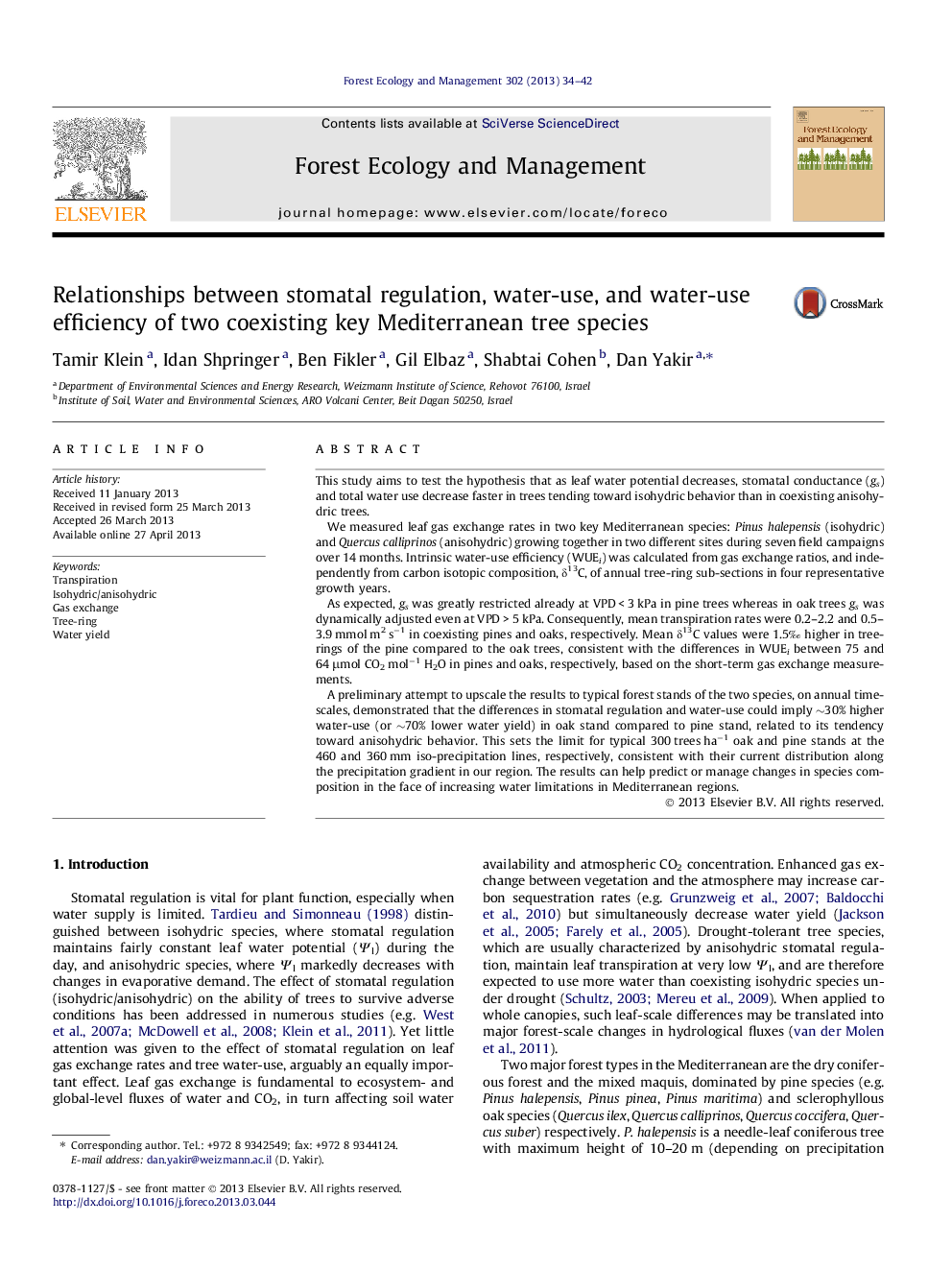| Article ID | Journal | Published Year | Pages | File Type |
|---|---|---|---|---|
| 87053 | Forest Ecology and Management | 2013 | 9 Pages |
•Water-use decreased faster in isohydric pine than in coexisting anisohydric oak.•Oak transpiration was similar to pine in winter and 2–4-fold in the rest of the year.•Higher water use efficiency in pine (17%) compensated for lower gas exchange.•Preliminary upscaling showed ∼30% higher water-use in the oak stand.•Typical pine and oak stands should allow water yields of 143 and 41 mm, respectively.
This study aims to test the hypothesis that as leaf water potential decreases, stomatal conductance (gs) and total water use decrease faster in trees tending toward isohydric behavior than in coexisting anisohydric trees.We measured leaf gas exchange rates in two key Mediterranean species: Pinus halepensis (isohydric) and Quercus calliprinos (anisohydric) growing together in two different sites during seven field campaigns over 14 months. Intrinsic water-use efficiency (WUEi) was calculated from gas exchange ratios, and independently from carbon isotopic composition, δ13C, of annual tree-ring sub-sections in four representative growth years.As expected, gs was greatly restricted already at VPD < 3 kPa in pine trees whereas in oak trees gs was dynamically adjusted even at VPD > 5 kPa. Consequently, mean transpiration rates were 0.2–2.2 and 0.5–3.9 mmol m2 s−1 in coexisting pines and oaks, respectively. Mean δ13C values were 1.5‰ higher in tree-rings of the pine compared to the oak trees, consistent with the differences in WUEi between 75 and 64 μmol CO2 mol−1 H2O in pines and oaks, respectively, based on the short-term gas exchange measurements.A preliminary attempt to upscale the results to typical forest stands of the two species, on annual time-scales, demonstrated that the differences in stomatal regulation and water-use could imply ∼30% higher water-use (or ∼70% lower water yield) in oak stand compared to pine stand, related to its tendency toward anisohydric behavior. This sets the limit for typical 300 trees ha−1 oak and pine stands at the 460 and 360 mm iso-precipitation lines, respectively, consistent with their current distribution along the precipitation gradient in our region. The results can help predict or manage changes in species composition in the face of increasing water limitations in Mediterranean regions.
